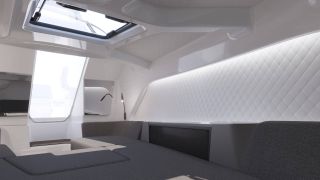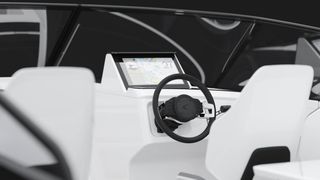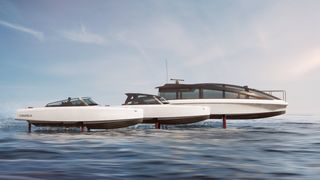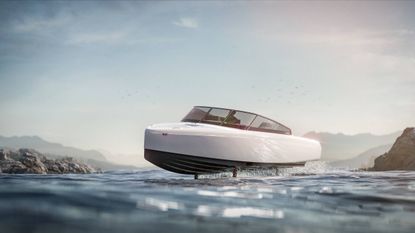Swedish company Candela is one of the leaders in electric boat building. Candela’s speciality is in designing hydrofoils, a hull type that massively reduces drag – and hence energy consumption – making it ideal for electric boats of all sizes. The company, which is based on Lidingö, one of the 24,000 islands that make up the Stockholm archipelago, currently has four key products: the P-12 water taxi, the P-30 commuter ferry, the C-7 leisure boat, and its more sophisticated descendant, the C-8.

The C-7 was the company's first boat
The C-7 marked the introduction of Candela’s C-POD propulsion system, a slender torpedo-like electric pod motor housed at the tip of the boat’s rear hydrofoil. Designed to be zero-maintenance with ultra-high levels of energy efficiency, the direct drive motor powers two contra-rotating screws that take the C-7 at speeds of up to 30 knots. It’s paired with a retractable dual hydrofoil system that lift the C-7 out of the water, reducing energy consumption by up to 80% to give the electric boat an impressive range of around 50 miles.

The new Candela C-8 electric hydrofoil speedboat
The C-8 takes the engineering to another level. Where the C-7 has a classic, almost vintage, power boat look, the C-8 is an altogether more contemporary affair. The 8.5m daycruiser has a deep hull that contains a spacious cabin for lounging and sleeping. There’s space for eight people to sit up on deck, with an optional hardtop version if you need all-weather transport.

The cabin of the Candela C-8
Above 16 knots, when the C-8 is perched on its hydrofoils at their most extended position, a collection of bespoke software and sensors is working furiously to keep the ride smooth and stable. This Flight Controller system is more akin to the avionics suite found on a light aircraft, changing the profile of the underwater wings and the C-POD for smooth changes of direction, regardless of the sea and weather conditions. As well as being zero emission and silent running, hydrofoil boats leave a minimal wake.

Touch screen controls make operating the C-8 straightforward
Although the C-8 is in pre-production the company has already taken around 100 orders. First deliveries are expected in Q2 2022.
The long-term goal is to scale the technology and bring the hydrofoil/pod combo to commercial applications. Candela points out that marine transport is responsible for between 4 and 5 percent of global C02 emissions – think of smoke-belching regional ferries and the grimy smell that permeates most harbours. Cities that depend on water traffic like Venice and Amsterdam are striving to phase out the diesel engine; in these locations the C-7 and C-8 make perfect private transport. However, the real savings will be made by bigger vessels. The Stockholm region has commissioned Candela to build the P-30 ferry, a bespoke 11m shuttle bus for the city’s archipelago. Set to enter service next year, the first vessels will have a capacity for 30 passengers (hence the name).

The Candela fleet, C-8, C-8 hardtop and C-30
Although the company believes that its hydrofoil tech could eventually accommodate up to 300 passengers, it points out that even a fleet of smaller vessels like the proposed P-12 water taxi would be faster, quieter, cleaner, and cheaper than one large, polluting ferry. Although the C-8 is firmly pitched at well-heeled Swedish island owners, Candela’s tech deserves to filter through to a far wider audience.
The Candela C-8 starts from €290,000.
Read more: Candela.com




